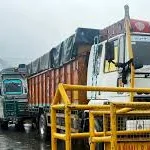The engine of the rural economy of Jammu and Kashmir – horticulture needs to be harnessed during the winter months so that the coming season produces bumper crop for the growers of the UT. Kashmir is blessed with a diverse climate and fertile soils, has long been celebrated for its summer horticultural produce, from its world-renowned apples to luscious cherries, peaches, and apricots. However, the valley’s long and harsh winters have often been viewed as a period of agricultural dormancy. This perception needs to change. With innovation and strategic planning, winter can be transformed into a season of growth. The scientific and technological strides in horticulture have provided us with a wide range of cold-resistant crops and advanced techniques that can be employed to cultivate them. High tunnel farming, hydroponics, and heated greenhouses are just a few examples of the innovations that can enable year-round horticulture in climates like Kashmir’s. These practices can keep the soil warm and protect plants from frost, enabling the cultivation of a variety of vegetables and flowers even in the dead of winter. Harnessing horticulture in winter can serve as a significant boost to Kashmir’s economy. It provides an opportunity for farmers to earn a year-round income, reducing the economic impact of the winter season. It can also spur job creation in multiple related sectors, from farm equipment to logistics, storage, and marketing. Moreover, winter horticulture can contribute to food security in the valley. By growing crops year-round, we can ensure a consistent supply of fresh produce, reducing dependence on imports and enhancing the nutritional intake of the local population. To realize this vision, a comprehensive and collaborative approach is needed. The government, agricultural institutions, and farmers must work together. Investment in infrastructure, training for farmers, research into cold-resistant crop varieties, and the development of local markets are all essential. The government can play a pivotal role by providing subsidies for the acquisition of horticultural equipment, offering low-interest loans for infrastructure development, and implementing policies that encourage winter farming. Agricultural institutions can support these efforts by conducting research on cold-resistant crop varieties and providing training to farmers on modern horticultural techniques. Importantly, the involvement of farmers is crucial. They must be willing to adopt new practices, innovate, and face the challenges that come with it. The government and agricultural institutions should ensure that farmers are provided with the necessary support to make this transition smoother. Harnessing horticulture in winters is an opportunity to tap into a source of economic growth, environmental sustainability, and agricultural resilience that can transform the valley’s winter idle period into a productive, profitable season.





